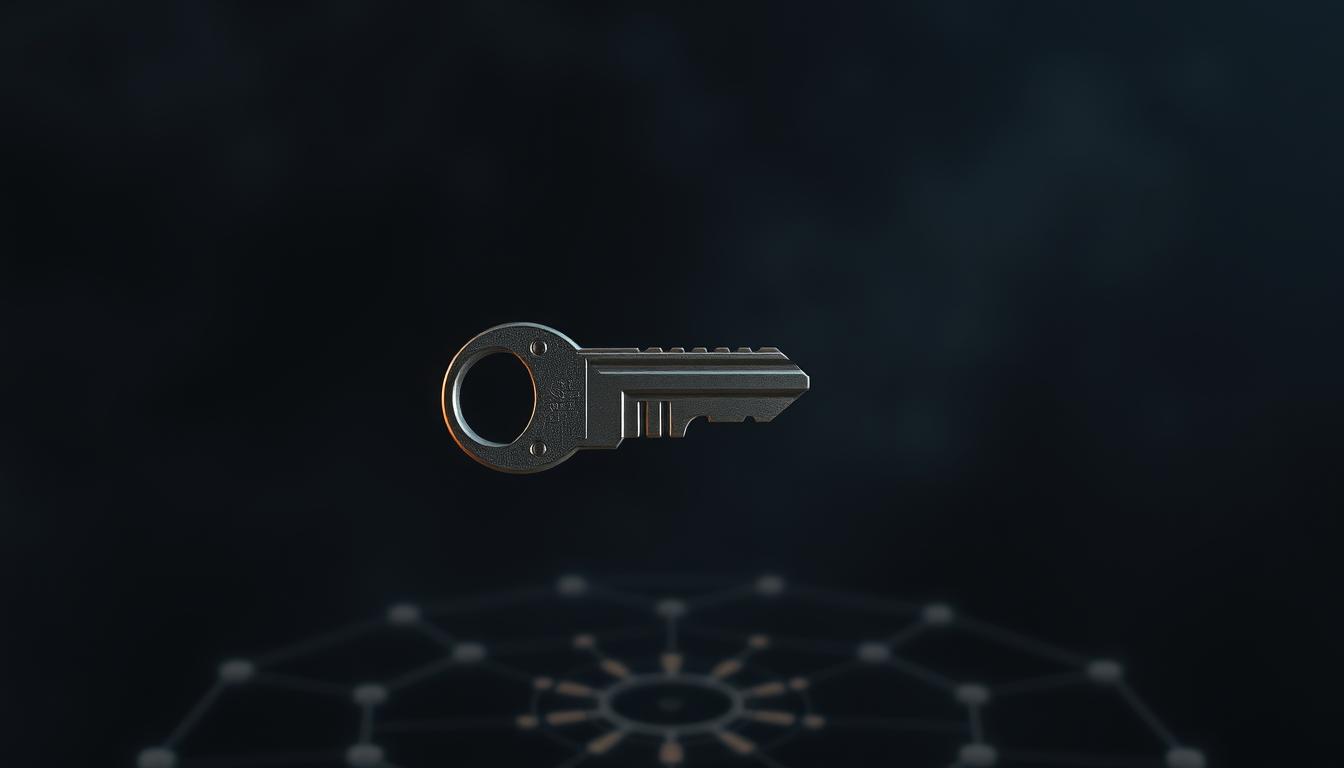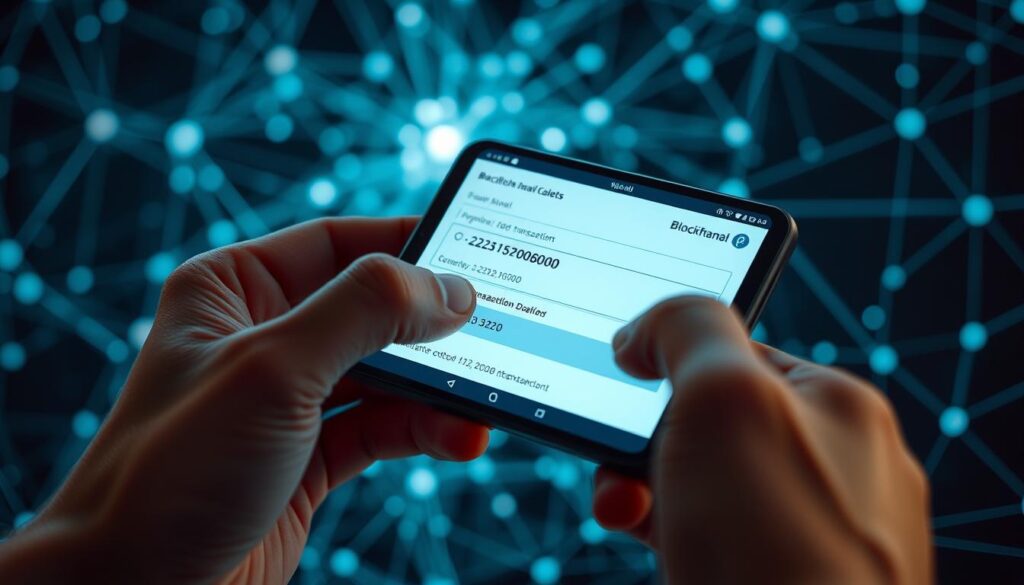Now Reading: Understanding Cryptocurrency Security Private Key Management
- 01
Understanding Cryptocurrency Security Private Key Management
Understanding Cryptocurrency Security Private Key Management

Taking control of your digital wealth starts with mastering one essential concept. This foundation determines who truly owns your coins and tokens in the decentralized world.
Proper key management represents the complete system for handling the cryptographic codes that grant access to your holdings. It involves generating, storing, using, and backing up these crucial elements safely.
This approach gives you absolute authority over your digital assets, eliminating reliance on third parties. Whether you’re handling small amounts or significant portfolios, robust protocols are non-negotiable for serious investors.
Our guide will walk you through everything from basic principles to advanced strategies. You’ll learn actionable methods suitable for individual users and organizations alike.
Key Takeaways
- Mastering cryptographic codes is fundamental to true ownership in the digital asset space
- Effective protocols encompass generation, storage, usage, and backup of access credentials
- Proper implementation provides complete sovereignty over your holdings
- Strategies should adapt to your specific wallet choices and asset values
- Robust practices are essential regardless of portfolio size
- Comprehensive protection extends beyond basic codes to include recovery phrases and authentication
- This knowledge forms the cornerstone of self-directed asset control
Introduction
Unlike traditional banking systems, blockchain technology places complete control in your hands. This represents a fundamental shift from centralized authority to individual sovereignty over digital assets.
In traditional finance, banks manage accounts and can reset passwords. With decentralized systems, you become the sole authority. There are no customer service lines to call if access is lost.
Your digital ownership is proven through cryptographic codes that authorize transactions. These essential elements grant exclusive access to your holdings on the blockchain network.
Losing these access credentials means permanent loss of your assets. This “be your own bank” model offers unprecedented freedom but requires serious responsibility.
| Traditional Finance | Decentralized Finance |
|---|---|
| Centralized authority controls accounts | Individual users maintain complete control |
| Password recovery through customer service | No recovery mechanism for lost access |
| Bank manages security infrastructure | User responsible for entire protection system |
| Account balances recorded in bank database | Ownership verified through cryptographic proof |
| Regulated by financial institutions | Governed by blockchain protocol rules |
Effective protection involves securing not just your digital wallets but the entire ecosystem of access methods. This includes backup phrases, device passwords, and authentication codes.
Understanding these principles is crucial for anyone holding digital assets. Our guide will help you develop robust protection strategies for your crypto journey.
Understanding Cryptocurrencies and Private Key Fundamentals
At the heart of every digital asset transaction lies a powerful cryptographic element. This system provides the mathematical proof required to validate ownership and authorize transfers on distributed networks.
These access codes function as ultra-secure digital signatures that prove asset ownership. They consist of long alphanumeric strings generated through complex cryptographic algorithms.
What Are Private Keys?
Your exclusive access codes serve as the ultimate proof of ownership for blockchain assets. When you initiate transfers, your wallet uses these elements to create unique digital signatures.
This authorization process occurs without revealing the actual code itself. The mathematical relationship between different cryptographic elements ensures secure verification.
One component can be freely shared to receive funds, while the other must remain completely confidential. This separation forms the basis of secure digital asset transfers.
| Private Keys | Public Keys | Addresses |
|---|---|---|
| Must remain completely secret | Can be safely shared with others | Public identifiers for receiving funds |
| Used to sign and authorize transfers | Used to verify transaction signatures | Derived from public keys through hashing |
| Prove ownership of associated assets | Mathematically linked to private keys | Often formatted as QR codes for easy sharing |
| Loss means permanent asset loss | Can be generated from private keys | Provide an additional layer of privacy |
How Key Management Works
Modern wallet systems generate a randomized seed phrase during setup. This phrase deterministically creates a master access code and corresponding public element.
Advanced wallets using hierarchical deterministic structures can create multiple addresses from one seed. All these addresses can be restored using the original backup phrase.
Possession of these cryptographic elements equals complete authority over associated assets. Understanding this foundation is essential before implementing protection strategies.
Cryptocurrency Security Private Key Management: Core Principles
The foundation of true ownership in the digital asset space rests on three core principles. These tenets form the framework for all effective protection strategies for your holdings.
Balancing these principles is the true challenge of robust key management. You must ensure access while preventing exposure.
The first principle is confidentiality. Your access codes must remain absolutely secret. Never share them or store them where others might see them.
Electronic transmission without encryption is a major risk. Isolation from internet-connected devices provides a strong layer of protection.
The second principle is availability. You need reliable access to your codes. Secure backup systems protect against device failure or loss.
These backups must also be secure from unauthorized recovery. This creates a careful balance between safety and accessibility.
The third principle is integrity. Your system must ensure codes are not altered or corrupted. Using the correct code for the intended crypto assets is critical.
| Principle | Core Focus | Implementation Goal |
|---|---|---|
| Confidentiality | Secrecy and Prevention of Exposure | Keep access codes completely private and offline. |
| Availability | Reliable Access for the Owner | Create secure, redundant backups for recovery. |
| Integrity | Accuracy and Tamper-Resistance | Ensure codes remain unchanged and are used correctly. |
Proper storage involves hardware security modules and multi-layer authentication. These principles apply to both small personal wallets and large institutional holdings.
The complexity of your system should scale with the value of your assets. Understanding this framework is the first step toward true sovereignty over your digital wealth.
The Role of Private Keys in Crypto Transactions
Every movement of digital assets on a blockchain is validated by a critical cryptographic process. This process ensures that only the rightful owner can initiate and authorize transfers.
When you send funds, your wallet software performs a complex operation behind the scenes. It uses your exclusive access codes to create a unique digital signature for that specific transaction.

Securing Digital Transactions
The signing process mathematically combines the transaction details with your secret codes. This produces a signature that proves authorization without ever exposing the sensitive elements.
This digital signature confirms three vital facts. It verifies the transfer was approved by the legitimate asset holder.
It also guarantees the transaction data remains unaltered after signing. Finally, it ensures the signature is unique and cannot be reused.
Blockchain networks check these signatures before recording any activity. This system prevents unauthorized access to your holdings.
Protecting your digital assets requires safeguarding these codes during the entire signing process. This is true whether you use online or offline storage methods.
| Transaction Type | Authorization Required | Common Use Case |
|---|---|---|
| Single-Signature | One set of secret codes | Personal wallets for individual users |
| Multi-Signature | Multiple sets of codes | Shared accounts or enhanced protection for organizations |
| Channel Setup (e.g., 2-of-2) | All participants’ codes | Instant payment channels requiring joint validation |
The integrity of the entire digital asset ecosystem relies on this fundamental relationship. Proper protection of your access credentials is non-negotiable for safe participation.
Exploring Key Management Best Practices
Different wallet types offer varying levels of protection for your blockchain holdings. Selecting the right approach depends on your specific needs and risk tolerance.
Effective strategies often combine multiple solutions for optimal balance.
Hardware vs Software Wallets
Hardware wallets provide the highest level of protection for significant holdings. These physical devices store access codes in specialized secure chips.
They remain disconnected from internet-connected devices during normal use. This isolation prevents remote attacks from compromising your assets.
Software wallets offer greater convenience for frequent transactions. These applications run on smartphones and computers.
However, they expose your codes to potential malware and phishing risks. Use them only for smaller, operational amounts.
Multisignature and Cold Storage
Cold storage involves keeping your access codes completely offline. This approach provides maximum protection against online threats.
Multisignature configurations require multiple approvals for transactions. This eliminates single points of failure in your protection system.
Many users combine these tools for comprehensive asset protection. Keep most holdings in secure cold storage while maintaining accessible amounts for daily use.
This layered approach balances security with practical accessibility needs.
Effective Backup Strategies for Seed Phrases
Your recovery phrase represents the ultimate safety net for your digital holdings. These 12 or 24 words can regenerate all access codes if your primary device fails.
Treat this phrase with the same caution as your main credentials. Anyone possessing these words gains complete control over associated funds.

Use durable materials like fire-resistant metal plates instead of paper. Store multiple copies in different locations to protect against local disasters.
Many wallets support an optional passphrase for enhanced protection. This creates a two-factor restoration process requiring both elements.
Follow this careful procedure during setup. Record words in exact order, verify through test restoration, and secure backups before adding significant funds.
Protect storage location codes with equal vigilance. Keep safe combinations separate from the phrases they protect.
Avoid digital storage on cloud services or email. These methods expose your entire protection system to remote threats.
Proper implementation ensures you maintain control despite device failures or losses. Your wallet recovery depends entirely on these strategic backups.
Securing Digital Assets Against Theft and Loss
Digital asset protection balances preventing theft while ensuring you never lose access to your own funds. This dual approach addresses both malicious attacks and accidental scenarios that could compromise your holdings.
Mitigating Unauthorized Access Risks
Strong passwords form your first defense against unauthorized access. Create unique credentials for each wallet application and enable two-factor authentication wherever available.
Mobile devices offer advanced protection features but require extra caution. Use biometric authentication and device encryption to safeguard your wallets. Modern smartphones include secure chips that isolate sensitive data.
Keep all software updated with the latest patches. This includes wallet applications and device operating systems. Regular updates fix vulnerabilities that could lead to loss of your assets.
Implement these essential protection measures:
- Use reputable antivirus software on all devices
- Avoid installing wallets from unofficial sources
- Enable remote wipe capabilities for mobile devices
- Maintain physical control over devices containing wallets
Recognize common attack methods like phishing websites and social engineering. These tactics attempt to trick you into revealing sensitive information. Always verify website authenticity before entering any credentials.
Layer multiple protection methods for comprehensive security. This approach requires attackers to bypass several independent safeguards. Meanwhile, you maintain access through properly secured backup systems.
Risk Management in Crypto Custody
A comprehensive approach to asset protection begins with recognizing the weakest links in your custody chain. Effective risk management requires understanding your entire protection landscape.
This systematic framework helps identify potential vulnerabilities before they become problems. Whether you choose self-custody or professional services, the principles remain essential.
Identifying Single Points of Failure
Single points of failure represent critical vulnerabilities in your custody system. These are elements whose compromise could lead to permanent loss of access or assets.
Map your entire protection architecture including passwords, PINs, and backup locations. Analyze which components represent these critical failure points.

Common failure scenarios include storing your only recovery phrase in one vulnerable location. Relying on a single hardware wallet without backup access also creates significant risks.
Mitigation strategies involve implementing redundant systems and geographic separation of backup components. Multisignature configurations distribute control, reducing single point vulnerabilities.
Balance protection against accessibility in your risk management approach. Overly complex systems can create more failure points, while simple ones may lack adequate safeguards.
Understanding your specific custody profile is crucial for implementing appropriate controls. The irreversible nature of blockchain transactions makes effective management non-negotiable.
Innovative Tools and Techniques for Private Key Management
Innovative approaches to safeguarding digital holdings leverage cutting-edge hardware and distributed systems for superior protection. These advanced solutions create multiple security layers that adapt to different user needs.
Hardware Wallet Technology
Modern hardware devices like Ledger and Trezor incorporate specialized secure chips. These isolated components protect sensitive data from general computer systems.
The technology creates an air-gapped environment for transaction signing. This prevents online threats from accessing your digital assets.
Enterprise solutions use Hardware Security Modules for institutional protection. These systems offer audit logging and role-based access controls.
Digital Vault Solutions
Distributed backup services like Vault12 Digital Vault eliminate single points of failure. They split recovery phrases across multiple trusted guardians.
No single guardian can reconstruct the complete backup data. This threshold system requires cooperation for recovery.
These innovative tools represent the evolving second layer of protection infrastructure. Users can choose solutions matching their technical comfort and asset values.
Managing Recovery and Restoration of Wallets
Confidence in your backup systems grows when you regularly practice wallet restoration procedures. This testing ensures you can regain access to your holdings when needed most.
Many people focus only on initial setup but neglect this critical verification step. Regular practice builds muscle memory for emergency situations.
Restoring Wallets from Seed Phrases
Start by installing compatible software on a secondary device. Access your securely stored backup phrase and enter the words carefully.
Verify that all expected addresses and balances appear correctly. This process confirms your backup works as intended.
Practice restoration before facing actual emergencies. Attempting recovery during a crisis increases stress and error risk.
| Restoration Scenario | Recommended Practice | Expected Outcome |
|---|---|---|
| Device replacement | Test on spare device quarterly | Full balance recovery |
| Multi-currency wallet | Verify each asset type separately | All funds accessible |
| Sweeping to new wallet | Practice with small amounts first | Successful transfer confirmation |
| Emergency recovery | Time yourself during practice | Confident, quick restoration |

Users should test their restoration capabilities annually or after any system changes. This regular verification maintains uninterrupted access to digital assets.
Familiarity with the restoration process provides peace of mind. Knowing you can recover your wallet ensures long-term control over your funds.
The Interplay of Transparency and Trust in Crypto Custody
Institutional adoption of digital assets forces a re-examination of traditional roles between companies and their financial partners. Cryptocurrencies reshape the dynamic between the asset owner, the custody provider, and the financial auditor.
For an external storage solution to be secure, all parties must fulfill their duties collaboratively. The company holding the assets must select an appropriate custody solution.
They must also ensure a risk-based internal control system is operational. With an external provider, the custodian handles the control system, but the company retains ultimate responsibility.
The custodian assumes the custody risk and typically earns a commission based on the value of the cryptocurrencies held. This creates a unique incentive structure.
This arrangement exists within the transparent nature of blockchain technology. Every transaction and proof of ownership is verifiable on the public ledger.
Yet, practical management requires trusting the custodian’s operational security. This creates a balance between cryptographic proof and institutional trust.
| Party | Primary Responsibility | Risk Profile |
|---|---|---|
| Asset Owner (Company) | Select custodian, maintain oversight, ultimate accountability | Bears final loss if custodian fails |
| Custodian | Implement and manage secure control systems | Holds operational risk; failure can lead to insolvency |
| Auditor | Verify control effectiveness and asset safety | Professional liability for inaccurate assessments |
Trust is earned through demonstrable security practices and regular independent audits. Understanding this interplay is crucial for safe institutional participation in the blockchain ecosystem.
Challenges and Common Pitfalls in Key Management
The greatest vulnerability in digital asset protection often stems from simple mistakes rather than complex technical failures. Many people underestimate how easily human errors can compromise even the strongest systems.
Common oversights include storing recovery phrases in digital notes or cloud documents. Others tape paper backups to obvious locations like under keyboards.
Mitigating Human Error and System Vulnerabilities
Human mistakes pose a constant threat to digital holdings. Incorrect transaction details or improper backup procedures lead to significant losses.
Technical vulnerabilities also create risks. Outdated wallet software and malware-infected devices can alter transaction data. Phishing sites that mimic legitimate interfaces trick users into revealing sensitive information.
Many people struggle with balancing protection and usability. Overly complex systems become unreliable during restoration. Meanwhile, oversimplified approaches create single points of failure.
Operational mistakes include failing to maintain updated records across multiple wallets. A growing number of users lose track of which access codes control specific assets.
Effective mitigation requires systematic approaches. Create clear documentation and practice recovery procedures regularly. Stay informed about emerging threats to your crypto assets.
Honestly assess your technical capabilities when selecting solutions. This ensures you choose protection methods you can maintain consistently over time.
Emerging Trends and Future of Key Management Technology
The landscape of digital asset protection is undergoing rapid transformation with innovative technologies. These advancements aim to simplify complex processes while maintaining robust safeguards.
New systems focus on reducing human error and increasing accessibility. They make self-custody more practical for mainstream users without sacrificing fundamental protection.
Biometric Authentication and Multi-Party Computation
Multi-party computation (MPC) represents a significant leap forward in this space. This technology distributes signing authority across multiple independent parties.
No single entity ever possesses the complete access credentials. Participants collaboratively generate signatures without exposing the full data set.
Biometric authentication offers convenient access using physical traits. Fingerprint and facial recognition provide intuitive control mechanisms.
These systems raise important questions about biometric data storage and privacy. Proper implementation requires careful consideration of these factors.
Social recovery models allow trusted contacts to help restore access. This approach balances security with practical recoverability for everyday people.
Threshold signature schemes eliminate single points of failure entirely. They represent the next layer in evolving protection methodologies.
Institutional vs. Individual Strategies for Key Management
Personal control versus professional custody represents a critical decision point for digital asset holders. Individual investors typically prioritize simplicity and direct ownership of their holdings.
For personal use, strategies focus on hardware wallets for cold storage and straightforward backup procedures. Users maintain complete control over their recovery phrases and access credentials.
Institutional needs demand more sophisticated management approaches. Large organizations require segregation of duties, where no single person can move funds independently.
Professional services offer enterprise-grade solutions for institutional clients. These providers use geographically distributed hardware security modules and multi-signature schemes.
When choosing between self-custody and third-party services, institutions consider internal expertise requirements. They also evaluate counterparty risk introduced by external providers.
Hybrid approaches combine the best of both worlds. Institutions maintain ultimate control through multi-signature arrangements while leveraging professional management for daily operations.
Both individuals and organizations must store private keys with measures matching their risk profiles. The evolving digital asset space continues to develop new solutions for different user needs.
Practical Examples and Case Studies
Examining actual cases provides invaluable insights into effective digital asset protection. These real-world situations illustrate both successful implementations and cautionary tales.
Consider someone securing 1.5 BTC worth over $100,000. They choose a hardware wallet for offline storage. This approach safeguards their crypto from online threats.
Real-Life Scenarios
The Mt. Gox collapse serves as a stark example of inadequate protection. Poor practices led to the loss of hundreds of thousands of Bitcoin.
Another scenario involves an individual who stored their recovery phrase in one location. A house fire destroyed their only backup, resulting in permanent loss.
Successful cases demonstrate proper procedures in action. Users have restored access after device failures through tested backup systems.
Lessons Learned
Institutional failures highlight the importance of multi-signature setups. Proper controls prevented unauthorized transactions in several documented cases.
Every crypto movement may appear as a spend transaction to regulators. This makes accurate record-keeping essential for compliance.
| Scenario Type | Protection Measure | Outcome |
|---|---|---|
| Large holding protection | Hardware wallet with geographic backups | Secure access maintained |
| Exchange failure | Inadequate custody controls | Massive asset loss |
| Single backup point | No geographic distribution | Permanent access loss |
| Device failure recovery | Tested restoration procedure | Successful fund recovery |
These examples translate abstract principles into concrete actions. They show the real consequences of both diligent and negligent practices across blockchain networks.
Conclusion
Effective stewardship of digital wealth demands continuous attention to the systems that protect your access and authority. Throughout this guide, we’ve established that robust key management forms the non-negotiable foundation for true ownership in the crypto space.
Proper protection requires balancing multiple objectives. You must maintain strong security against threats while ensuring reliable access for legitimate transactions. This ongoing practice involves regular reviews of your wallet setup and backup procedures.
Remember that these principles apply whether you’re managing modest holdings or substantial assets. Start with appropriate measures from day one, as protection cannot be postponed. Your private keys represent absolute control—handle them with the seriousness they deserve.
FAQ
What is a private key in simple terms?
Think of a private key as the master password to your digital assets. It is a very long, unique code that proves you own your funds on the blockchain. Unlike a password you can reset, losing this key means losing access to your holdings permanently.
How does a hardware wallet improve security?
Hardware wallets like Ledger or Trezor store your private keys offline on a physical device. This method, known as cold storage, keeps your keys isolated from internet-connected computers, drastically reducing the risk of theft from hackers or malware.
What is a seed phrase and why is it critical?
A seed phrase is a list of words (usually 12 or 24) that can regenerate your entire wallet, including all its private keys. It serves as a master backup. If you lose your device, this phrase is the only way to restore your access and regain control of your assets.
What is the biggest risk in managing my own keys?
The primary risk is irreversible loss. If you lose your private key or seed phrase, no one can recover your funds. There is no central authority, like a bank, to help. This places the full responsibility for safekeeping on the user.
What is multisignature (multisig) protection?
Multisignature requires approval from multiple private keys to authorize a transaction. For example, a 2-of-3 setup might need two keys from three different sources. This adds a powerful layer of security, preventing a single point of failure and making unauthorized access much harder.
How do custodial services differ from self-custody?
With a custodial service, a third party (like an exchange) holds your private keys for you. This can be more convenient but means you trust them with your assets. Self-custody means you alone hold the keys, giving you full ownership and control but also all the responsibility.














